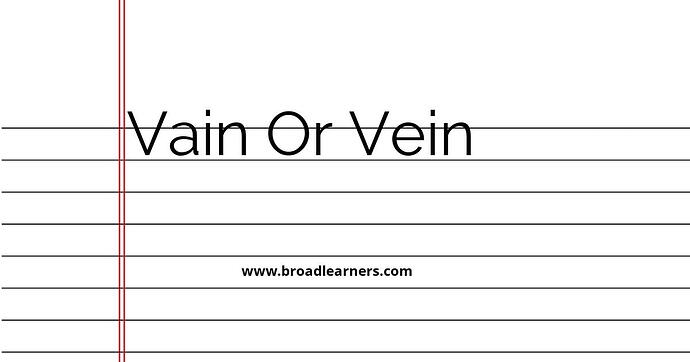'Vain' and 'vein' are commonly confused words in English grammar. Understanding the difference between 'vain' and 'vein' is important to use them correctly in written and spoken English.
'Vain' is an adjective that means having an excessively high opinion of oneself, especially in terms of appearance or achievements. It is often used to describe someone who is overly concerned with their own attractiveness or importance.
'Vein' is a noun that refers to the blood vessels that carry blood back to the heart. It can also refer to a streak or line of a different color or texture in a material, such as wood or marble.
Let's take a closer look at the meanings and usage of 'vain' and 'vein'.
| 'Vain' | 'Vein' |
|---|---|
| The word 'vain' is used to describe someone who is excessively concerned with their appearance or achievements. | The word 'vein' refers to blood vessels or a streak or line in a material. |
|
|
To remember the difference between 'vain' and 'vein', it can be helpful to associate 'vain' with appearance and 'vein' with blood vessels or streaks in materials.
Here are some examples of correct usage:
- She is so vain, always checking herself in the mirror. (referring to someone's excessive concern with appearance)
- The nurse inserted the needle into a vein. (referring to a blood vessel)
- He is too vain to accept any criticism. (referring to someone's excessive pride)
- This piece of wood has a beautiful vein running through it. (referring to a streak in wood)
Remembering the correct usage of 'vain' and 'vein' will improve your grammar and communication skills.
